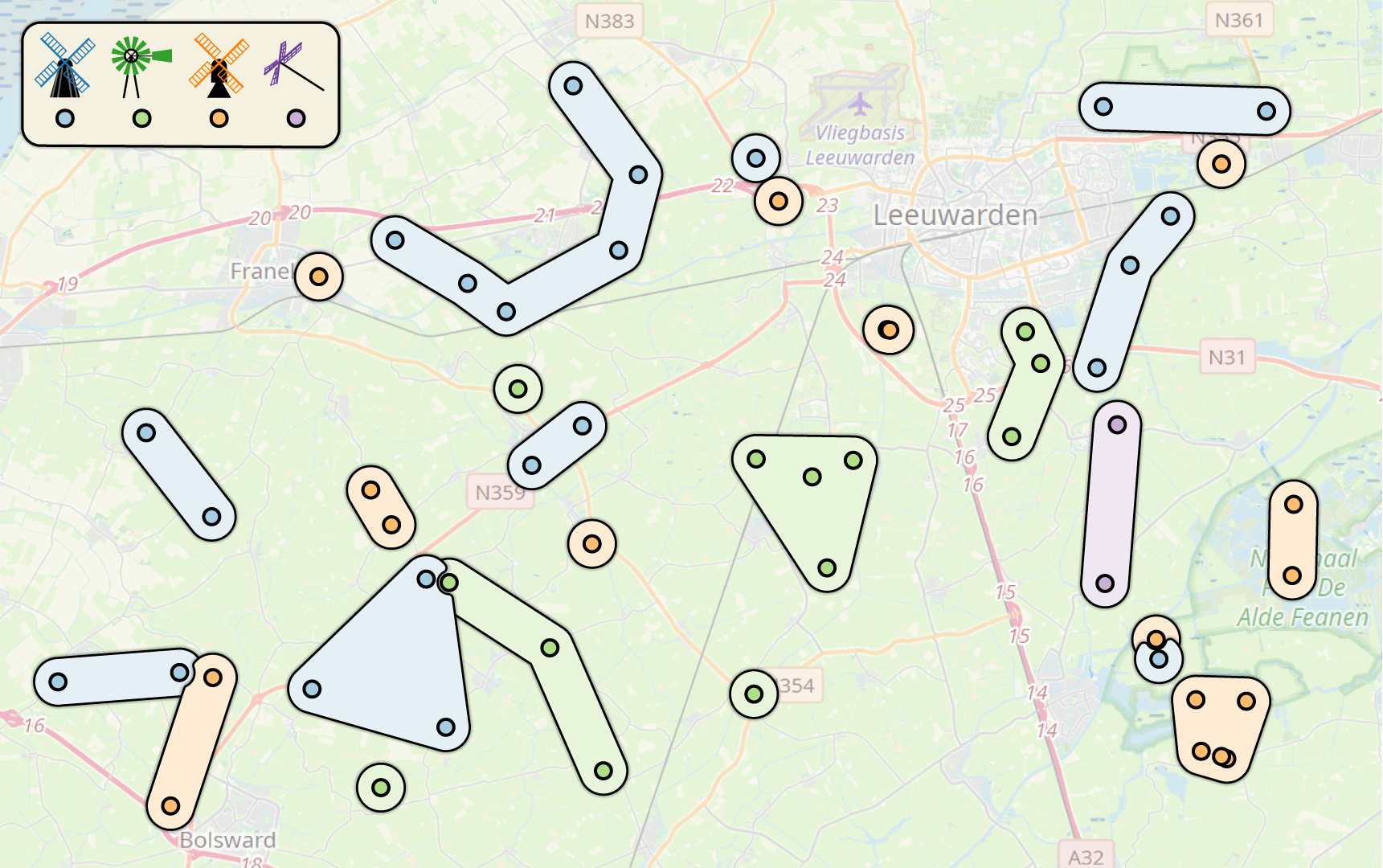SimpleSets: Capturing Categorical Point Patterns with Simple Shapes
Steven van den Broek - TU Eindhoven, Eindhoven, Netherlands
Wouter Meulemans - TU Eindhoven, Eindhoven, Netherlands
Bettina Speckmann - TU Eindhoven, Eindhoven, Netherlands
Download preprint PDF
Download Supplemental Material
Room: Bayshore VII
2024-10-16T15:15:00ZGMT-0600Change your timezone on the schedule page
2024-10-16T15:15:00Z

Fast forward
Full Video
Keywords
Set visualization, geographic visualization, algorithms
Abstract
Points of interest on a map such as restaurants, hotels, or subway stations, give rise to categorical point data: data that have a fixed location and one or more categorical attributes. Consequently, recent years have seen various set visualization approaches that visually connect points of the same category to support users in understanding the spatial distribution of categories. Existing methods use complex and often highly irregular shapes to connect points of the same category, leading to high cognitive load for the user. In this paper we introduce SimpleSets, which uses simple shapes to enclose categorical point patterns, thereby providing a clean overview of the data distribution. SimpleSets is designed to visualize sets of points with a single categorical attribute; as a result, the point patterns enclosed by SimpleSets form a partition of the data. We give formal definitions of point patterns that correspond to simple shapes and describe an algorithm that partitions categorical points into few such patterns. Our second contribution is a rendering algorithm that transforms a given partition into a clean set of shapes resulting in an aesthetically pleasing set visualization. Our algorithm pays particular attention to resolving intersections between nearby shapes in a consistent manner. We compare SimpleSets to the state-of-the-art set visualizations using standard datasets from the literature.